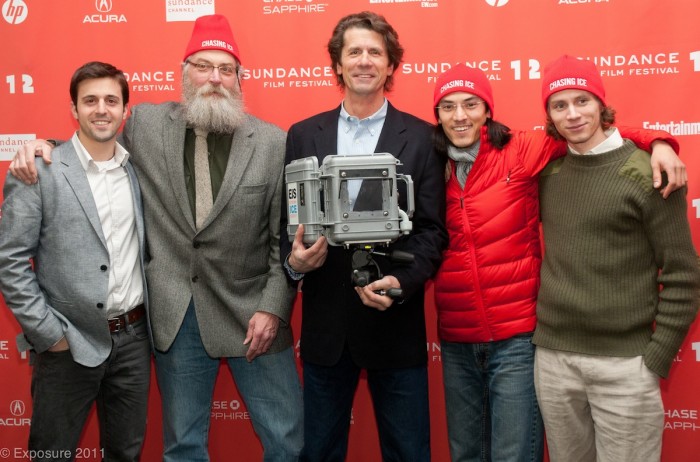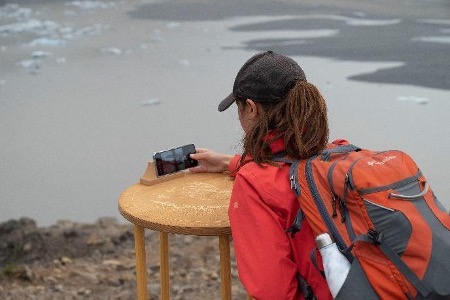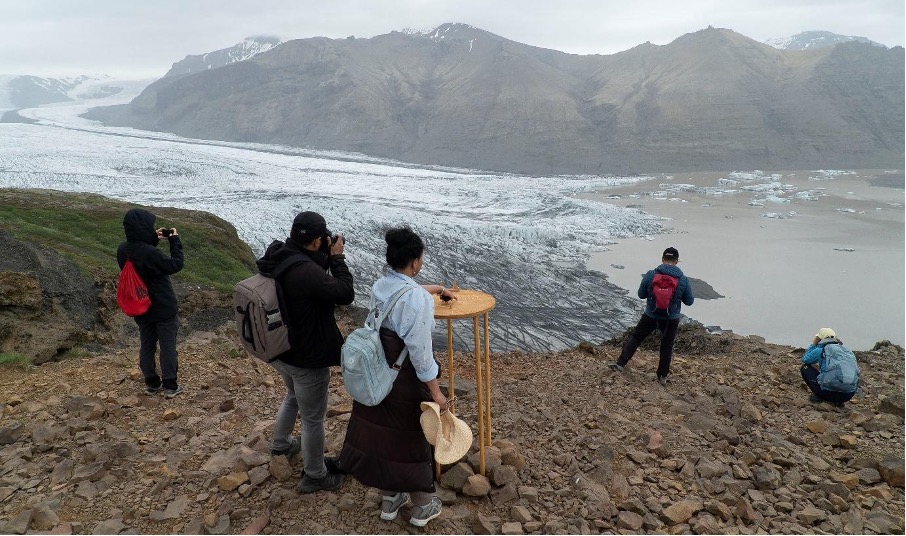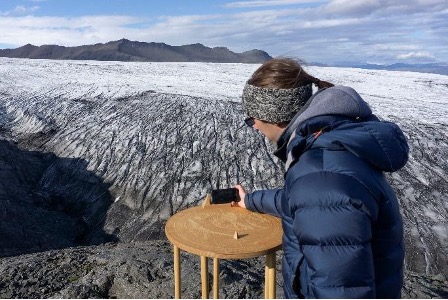Our visual evidence is a deep dive into how glacial ice has melted and receded in alpine, Arctic, and Antarctic regions. Through single-frame still photography, we have produced a beautiful and in-depth portfolio about the cryosphere. Since 2007, we have also produced a large archive of time-lapse images documenting how a changing climate has impacted the ice.
Over the years, we have deployed 72 time-lapse cameras at several dozen sites. Our archive of visual evidence, edited into stunning videos, amounts to 1.5 million frames and is stored at the National Snow and Ice Data Center in Boulder, Colorado.
EIS gained worldwide fame in 2012 with the release of the award-winning documentary film Chasing Ice, produced by Exposure Labs. The film may be licensed for home and group screenings (discounts for educators), and may be purchased or rented on Amazon Prime and Apple TV.
EIS imagery is estimated to have impacted well over 150 million people globally.

The Chasing Ice team at Sundance Film Festival (2012)
(L-R) Adam LeWinter, Tad Pfeffer, James Balog, Jeff Orlowski, Svavar Jónatansson
Ice is where we can see and hear and feel climate change in action. Ice responds to the touch of the air and water around it. When it melts, ice declares in a voice loud and clear that the Earth is warming.
Most of the world’s glaciers have been receding and/or thinning as Earth’s climate has warmed. Imagery of this retreat, produced by Extreme Ice Survey, provided the general public with the first easily understood evidence of climate change and has played a significant role in shifting worldwide public perception about the reality of the issue.
For information on Chasing Time, the 2024 sequel to Chasing Ice, click here:
We live in an era of radical environmental change. The country of Iceland is experiencing some of the fastest and most visually dramatic of those changes, the retreat of its glaciers due to a warming climate. The Extreme Ice Survey documented this historic recession from 2005 to 2022.
Now, in a new effort, the Extreme Ice Survey Iceland (EISI), is expanding upon those observations. Meant to endure for 100+ years, EISI is a collaboration of citizen scientists from around the world and professional observers from Iceland and the U.S.
Given the proclivities of President Trump and other authoritarians to ignore science and destroy protection of the environment, we believe EISI is more timely and historically important than ever.




